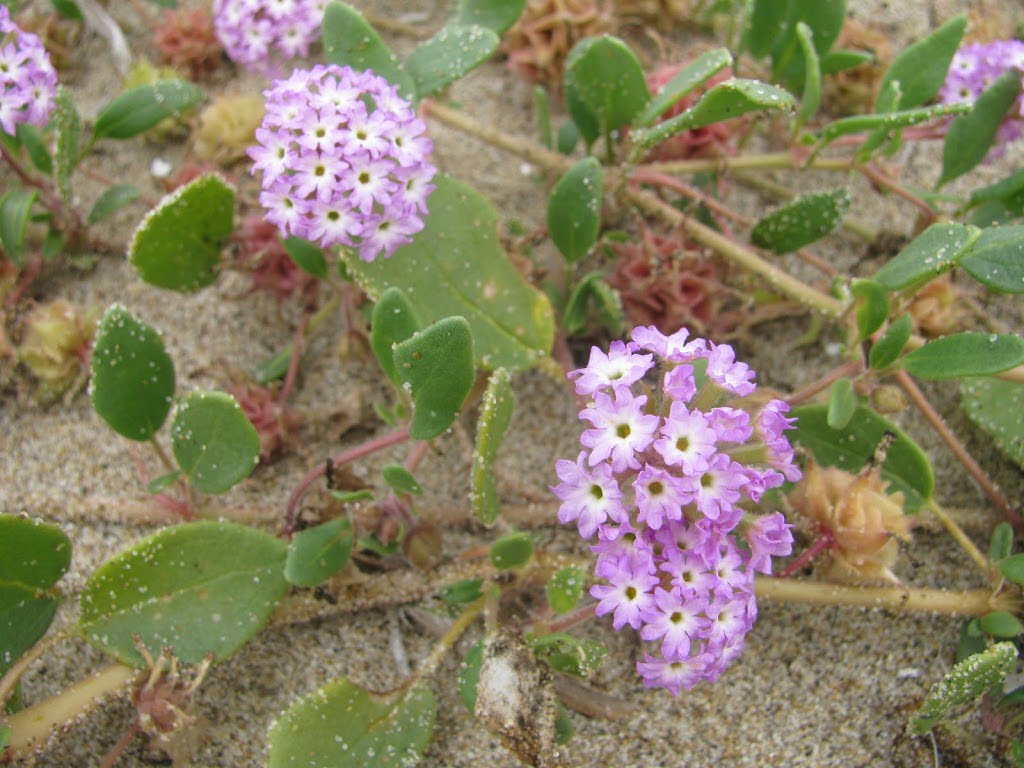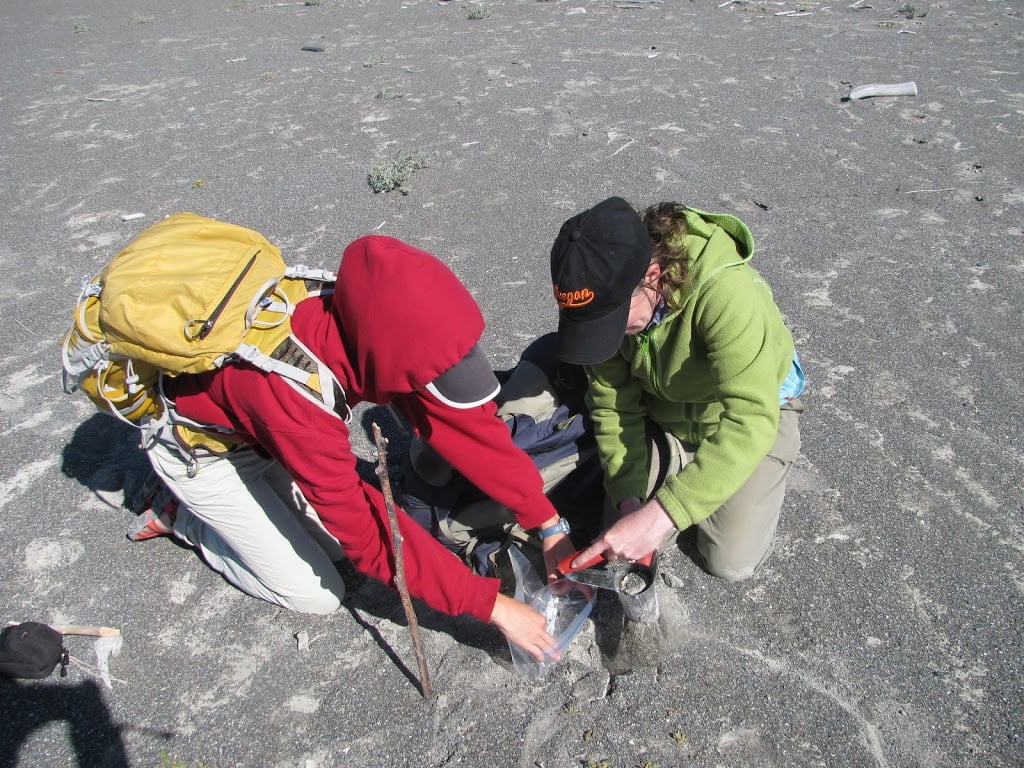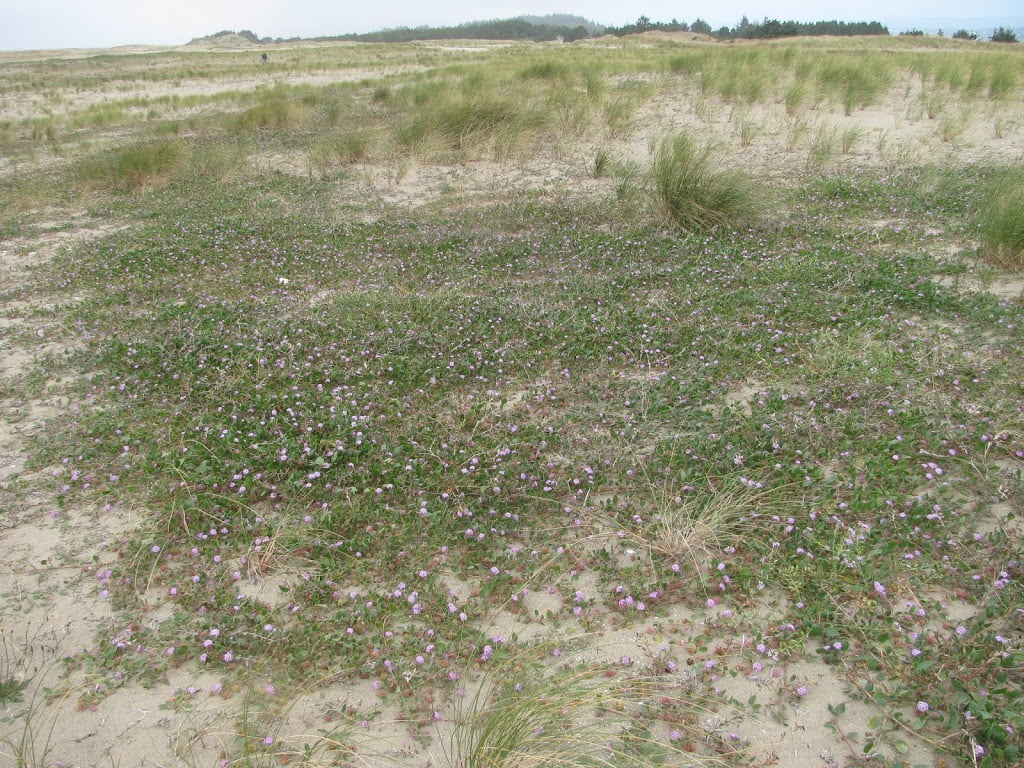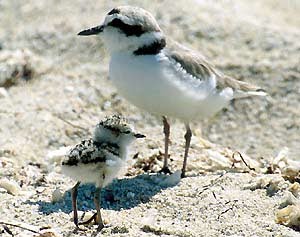Pink sand verbena monitoring on the Oregon Coast
 |
| Abronia umbellata ssp. breviflora |
Pink sand verbena (Abronia umbellata ssp. breviflora) is a short-lived perennial in the Nyctaginaceae family that is native to the Pacific Coast. Individuals of this species only reproduce by seed and many individuals act as annuals, flowering and dying in their first year of growth. Given their placement on dynamic dune systems, most populations are obliterated during winter storm events but seeds persist and are able to reestablish in the following years. This pattern leads to highly variable populations (in both size and distribution) from year to year, but shows that a long-lived, persistent seed bank is possible and necessary for survival. Historically found in widespread populations between British Columbia, Canada and Northern California, the species is now sparsely distributed throughout the range. Pink sand verbena was thought to be extinct in the northern part of its range until 2 plants were found on Vancouver Island in 2000 and another two plants were found in Washington in 2006. Existing populations are geographically isolated to the extent that there is little possibility of genetic exchange. The greatest threat to the verbena habitat is competition with invasive European beachgrass (Ammophila arenaria), which has become widespread throughout pink sand verbena’s range and easily outcompetes native forbs. The beach grass was introduced to the U.S. coast in the early 1900s and, once established, began stabilizing foredunes and disrupting the dynamic, hummocky dune habitat that pink sand verbena thrives in.
 |
| Staff collected sand for substrate analysis |
Research has been conducted since the mid-1990s about methods for reintroduction. In extensive seeding experiments, over 3.8 million seeds have been distributed across more than 23 Oregon Coast sites. The sites that had the most successful plant establishment rates were ones where the beach grass populations had been disturbed by bulldozing the top layer of sand and vegetation off the dune. Following reintroduction in 1997, population numbers were steadily increasing until 2010. Population surveys by IAE began in 2000 and have extended across lands owned by the US Forest Service, the Bureau of Land Management, the State of Oregon, and private land owners. In 2012, monitoring occurred at nine populations near Bandon, Coos Bay, and Florence. Researchers found that the number of plants at several sites had increased since the previous year. Oregon’s largest population of pink sand verbena occurs on the Coos Bay North Spit and is entirely a product of seeding efforts. Seed was collected from a population in Port Orford in the mid-1990s and was spread across an area identified as ideal sand verbena habitat in 1997. Seeding at the site resulted in a population of over 185,000 plants in 2011. In addition, a trip was taken to Floras Lake and the survey crew discovered 67 plants (8 reproductive) at the site, which hasn’t had plants documented since 2006. This site was last seeded in 2000, so the current population could indicate a small, but long-lived seed bank.
 |
| A mat of pink sand verbena sprawls across the dune on the Coos Bay North Spit. Now the largest population in Oregon, this is entirely a result of seeding by IAE and its partners. |
The pink sand verbena produces flowers June through September, but the surveying and monitoring window is limited due to protection of the western snowy plover’s nesting habitat. The western snowy plover is a small shorebird that has been listed as threatened at the federal level. It is native to the beaches of the Pacific Coast, but has experienced a drastic decline in numbers over the past several decades, primarily due to habitat degradation and destruction. The state of Oregon recognized the decline and has included the plover on the state threatened species list since 1975. The Pacific Coast population of snowy plovers inhabits the same area in which pink sand verbena is found, and their population decline has coincided with the decline of the verbena and several other native beach species. According to the Western Snowy Plover Recovery Plan there used to be 20 nesting sites along the Oregon Coast, but that number has dwindled to just seven areas that are consistently used. One of the steps taken to work towards delisting the species is restricting access to known breeding areas during the nesting season, typically between March and late September. Ideal nesting sites such as dune-backed beaches, sand spits, and sparsely vegetated dunes with active sand movement coincide with ideal habitat for pink sand verbena populations.
 |
| Western snowy plover and chick. Photo source: www.duneguide.com |





